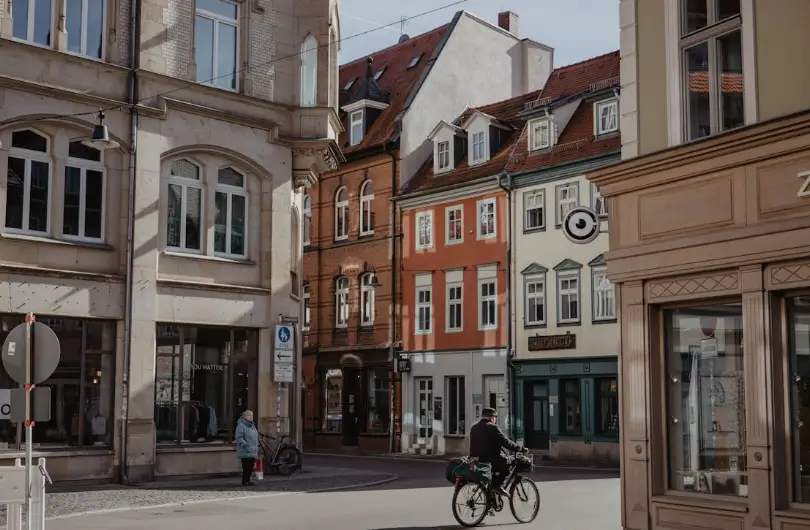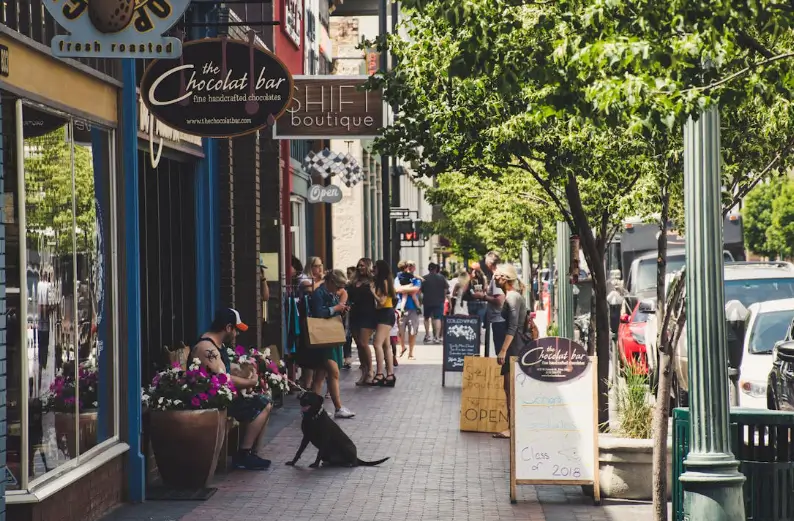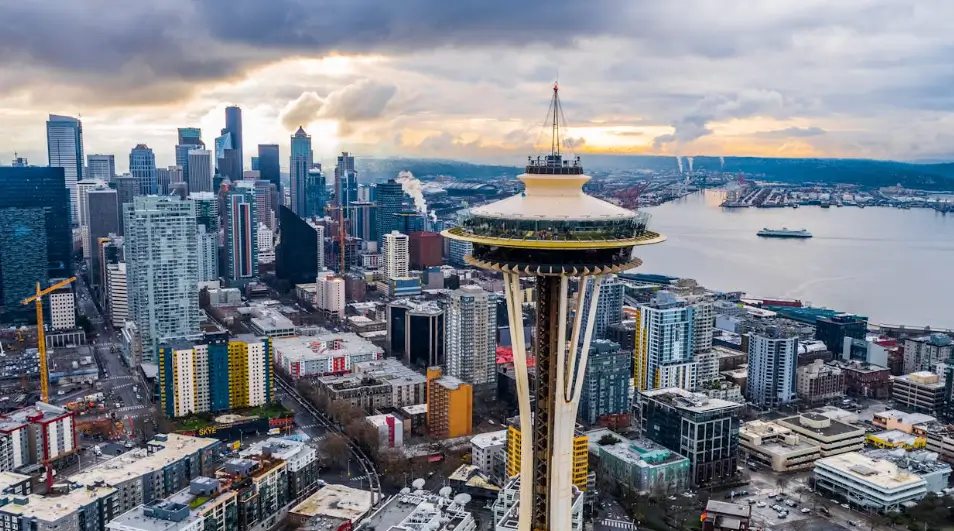Why Downtowns Feel Alive (and Suburbs Don’t)
Walk downtown on a Friday night and you feel it immediately. Music spilling from a bar. The smell of food drifting from open doorways. Friends bumping into each other on the sidewalk, stopping to chat. Even strangers feel connected, simply because they’re sharing space.
Now picture the suburban strip at the same hour. Acres of parking lot sit empty. The last chain restaurant’s neon buzzes under the quiet hum of streetlights. The streets are wide, but no one’s walking. A landscape designed for cars, not people.
The contrast is obvious, but why does it exist? And more importantly, what can cities learn from it?
Density fuels energy
Downtowns feel alive because density multiplies the odds of human connection. More people living, working, and playing in a small area means more chance encounters. It means businesses can survive on walk-ins rather than distant commuters. It means public spaces don’t feel empty—they feel shared.
Suburbs, on the other hand, separate everything. Houses here. Stores there. Offices miles away. The separation drains energy. You might get convenience, but you rarely get vibrancy.
Mixed use is the secret ingredient
The most electric streets are those where land uses overlap. Housing above stores. Offices near coffee shops. Parks surrounded by apartments. You don’t need to plan your whole day around driving from one box to another—you can simply walk outside.
Suburbs typically zone against this very mix. Homes must be separated from shops, and shops from workplaces. The result is silence after dark, when single-use areas “close” until the next morning.
Transit is the skeleton
This week’s headlines about rail expansions and port projects prove a point: mobility builds life. A train station in the middle of a downtown doesn’t just bring commuters. It brings foot traffic for local businesses, makes housing more desirable, and creates a natural hub for community life.
Suburbs tend to miss this. Their bones are built for cars: wide arterials, cul-de-sacs, endless parking. It’s a skeleton that prioritizes movement through a place, not within it.
Design shapes behavior
Sidewalks that invite lingering. Storefronts that change every 20 feet. Lighting that makes it safe to walk. Public spaces where you might stumble into a concert or food truck rally. These details make downtowns tick.
Compare that to the suburban model: deep setbacks, seas of asphalt, and buildings turned inward. It’s not just ugly—it’s isolating.
The lesson for planners
We’re pouring billions into infrastructure right now—rail projects, port deepening, zoning rewrites. If cities want to get the most out of those investments, they need to make sure their local design doesn’t choke the life out of regional mobility.
Think about it: a shiny new commuter rail line isn’t much good if the station is surrounded by nothing but parking lots. But put that same station in a downtown, surrounded by housing, restaurants, and shops, and suddenly the investment pays back in community energy and economic growth.
Why this matters for people
Most of us don’t notice “zoning codes” or “land use patterns.” We just know how a place feels. Downtowns feel alive. Suburbs often don’t. That feeling comes down to density, design, and mix of uses.
As more cities revisit their zoning and think about long-term growth, this is the takeaway: If you want to build a place that hums with energy—where people linger, where businesses thrive, where public spaces feel safe—then you need to copy what downtowns do well.
And if you don’t? You’ll get silence, asphalt, and car dependency.
Cities have a choice: build places for cars, or build places for people. Only one of those feels alive.
%20(1200%20x%20237%20px)%20(300%20x%2059%20px).webp)
.webp)




